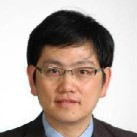"Neurosurgery": Emerging Clinical Skills in 2022 and Beyond
A special issue of Journal of Clinical Medicine (ISSN 2077-0383). This special issue belongs to the section "Clinical Neurology".
Deadline for manuscript submissions: closed (30 July 2023) | Viewed by 16847
Special Issue Editor
Special Issue Information
Dear Colleagues,
Since 1919, the prelude of modern neurosurgery history, neurosurgical expertise, technology, resources, and access to information have continually evolved around the globe. With the in-depth exploration of cranial base anatomy by Dolenc and Rhoton and the introduction of the emerging surgical concept and endoscopic technology, the application of neurosurgery has expanded from the supratentorial space to the whole central cranial base. Despite all this inspiring progress, surgical management of intracranial lesions is still associated with high post-operative morbidity and mortality due to the inherent eloquent location. What techniques or specific skills used in neurosurgery could benefit patients the most? This is clearly an issue that must be solved urgently. Thus, in this Special Issue, I would like to invite authors to submit studies focusing on new and developing surgical skills and clinical techniques assisting the diagnosis, pre-operative evaluation, intraoperative monitoring and postoperative rehabilitation of neurosurgery. Authors are welcome to cover other specific topics that have not been mentioned but fall within the theme of the Special Issue.
Dr. Zhen Wu
Guest Editor
Manuscript Submission Information
Manuscripts should be submitted online at www.mdpi.com by registering and logging in to this website. Once you are registered, click here to go to the submission form. Manuscripts can be submitted until the deadline. All submissions that pass pre-check are peer-reviewed. Accepted papers will be published continuously in the journal (as soon as accepted) and will be listed together on the special issue website. Research articles, review articles as well as short communications are invited. For planned papers, a title and short abstract (about 250 words) can be sent to the Editorial Office for assessment.
Submitted manuscripts should not have been published previously, nor be under consideration for publication elsewhere (except conference proceedings papers). All manuscripts are thoroughly refereed through a single-blind peer-review process. A guide for authors and other relevant information for submission of manuscripts is available on the Instructions for Authors page. Journal of Clinical Medicine is an international peer-reviewed open access semimonthly journal published by MDPI.
Please visit the Instructions for Authors page before submitting a manuscript. The Article Processing Charge (APC) for publication in this open access journal is 2600 CHF (Swiss Francs). Submitted papers should be well formatted and use good English. Authors may use MDPI's English editing service prior to publication or during author revisions.
Keywords
- neuro tumors
- vascular disease
- surgery
- radiosurgery
- chemotherapy
- clinical trial
- bibliometric analysis
- molecular study
Benefits of Publishing in a Special Issue
- Ease of navigation: Grouping papers by topic helps scholars navigate broad scope journals more efficiently.
- Greater discoverability: Special Issues support the reach and impact of scientific research. Articles in Special Issues are more discoverable and cited more frequently.
- Expansion of research network: Special Issues facilitate connections among authors, fostering scientific collaborations.
- External promotion: Articles in Special Issues are often promoted through the journal's social media, increasing their visibility.
- Reprint: MDPI Books provides the opportunity to republish successful Special Issues in book format, both online and in print.
Further information on MDPI's Special Issue policies can be found here.






